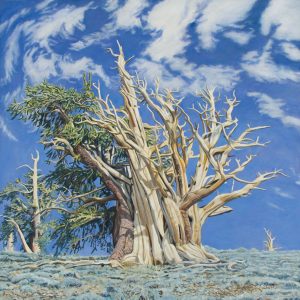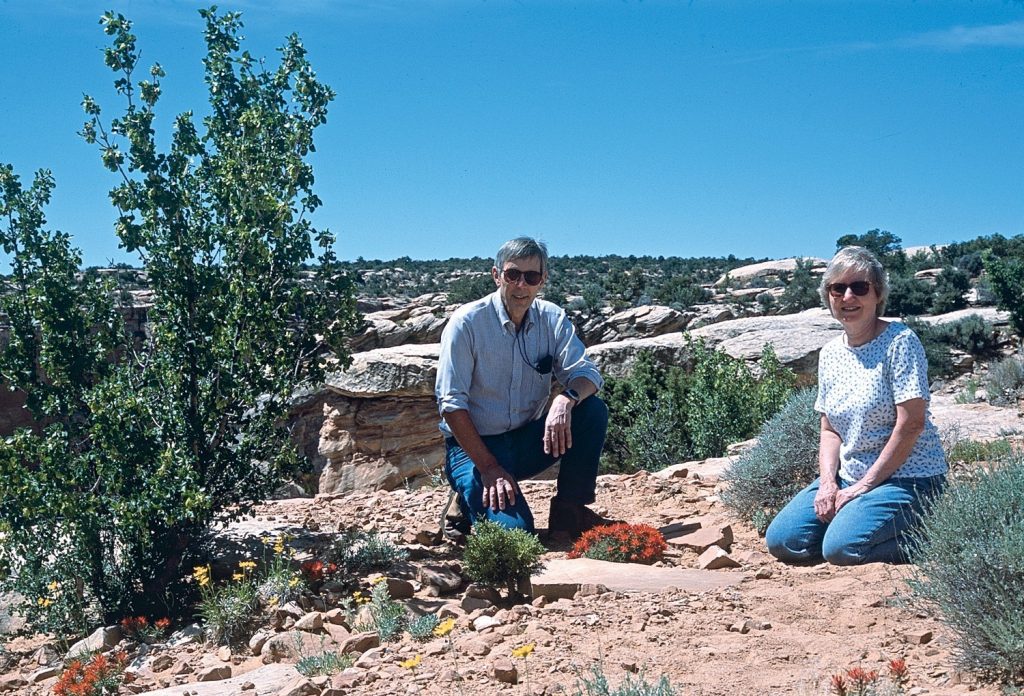A Project as Big as the West: Wrapping Up More Than 80 Years of Intermountain Plant Research
Posted in Books: Past and Present on May 2, 2017 by Stevenson Swanson
Stevenson Swanson is the Science Media Manager for The New York Botanical Garden.

[Pinus longaeva, Intermountain bristlecone pine]
Oil on linen
in Intermountain Flora, Volume Seven
The New York Botanical Garden Press recently published the last volume in the series, Intermountain Flora, Volume Seven—Potpourri: Keys, History, Authors, Artists, Collectors, Beardtongues, Glossary, Indices. This 312-page supplement is both a history and a guide to the series, which provides authoritative, scientific treatments of nearly 4,000 plant species found in the Intermountain West.
As its subtitle indicates, Volume Seven brings together a diverse range of contents, including keys for identifying all of the plant families covered by the series, a cumulative index for all seven volumes, a history of the project, biographies of the principal authors and artists, hundreds of contemporary and vintage photographs of scientists, artists, and plant collectors who have worked in the Intermountain West, and a botanical glossary. The volume also updates the treatment of the genus Penstemon, a group of flowering plants commonly known as beardtongues. In the years since 1984, when the genus was included in Volume Four of the Intermountain Flora, the number of known Penstemon species in the region has increased from 104 to 119, thanks to extensive field work by researchers in Nevada and Utah.
Botanist Basset Maguire had the idea for a comprehensive study of the plant life of the Intermountain West in 1931 when he was a professor at Utah State University. Maguire brought the project with him when he joined the Botanical Garden in 1943.
With its isolated mountain ranges and many unusual soil types, the Intermountain region is home to a vast diversity of plant life, including a profusion of highly localized species that occur nowhere else. Its ecosystem, however, has suffered from overgrazing by cattle and sheep, invasive species, poorly planned mining, and other development pressures. As a result, more than 500 plant species in Utah are considered at risk of extinction, as are more than 460 in Nevada.

It’s not surprising, then, that the Intermountain Flora series has become an indispensable resource for the conservation of natural resources and wilderness areas. It has won followers not only among scientists who study the region but also land-use managers, civil engineers, conservation officials, and nature lovers who want to learn about the region’s native plants.
Noel H. Holmgren, Ph.D., has been associated with The New York Botanical Garden for more than 50 years and is now Senior Curator Emeritus. Patricia K. Holmgren, Ph.D., directed the Botanical Garden’s William and Lynda Steere Herbarium for more than 32 years and is now Honorary Senior Curator.
“Basset Maguire, who first envisioned an Intermountain Flora in the early 1930s, could not have imagined that 80 years would pass before the final volume of the Flora was published,” the Holmgrens write in the introduction to Volume Seven. “Intermountain Flora could not have been done anywhere other than The New York Botanical Garden because of its extensive historical and modern herbarium collections from the Intermountain West, its unsurpassed library, and the willingness of the administration and Board of Managers to support a long-term project.”
To find out how to order Intermountain Flora, Volume Seven, click here.

